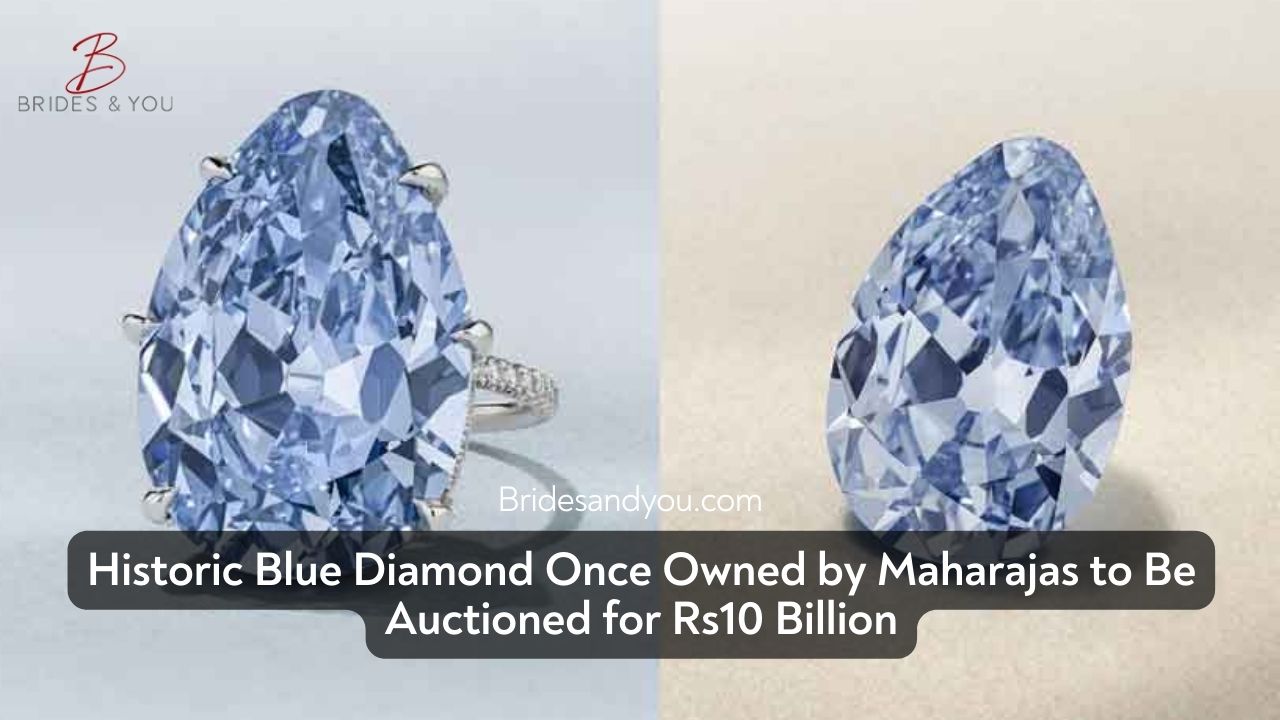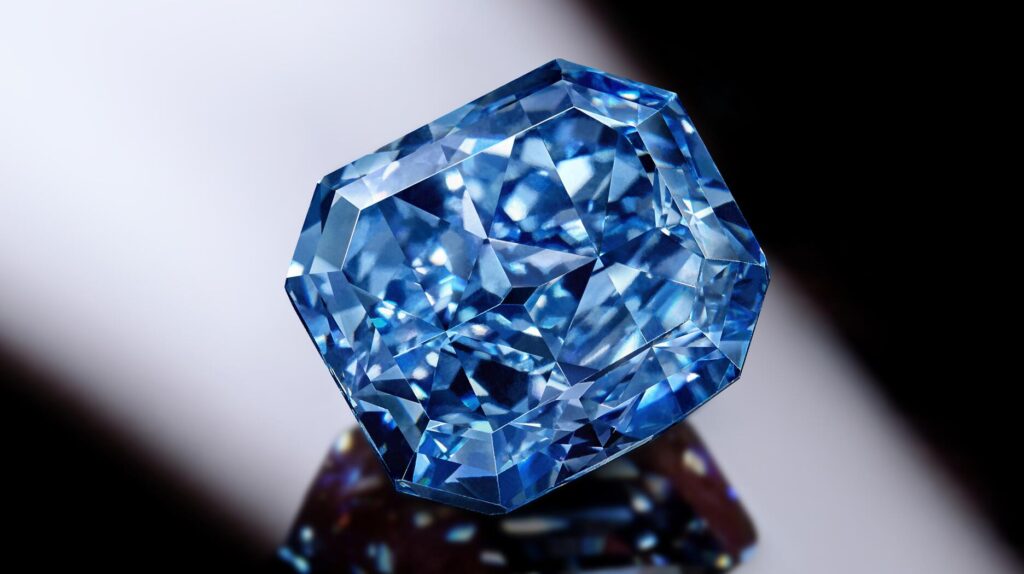Now Reading: The Legendary Golconda Blue Diamond: A Royal Treasure Returns to the Auction Block
-
01
The Legendary Golconda Blue Diamond: A Royal Treasure Returns to the Auction Block
The Legendary Golconda Blue Diamond: A Royal Treasure Returns to the Auction Block

A Royal Gem Resurfaces: The Golconda Blue Diamond Returns to Dazzle the World
An extraordinary relic of India’s regal past is about to make history once again. The Golconda Blue Diamond, a mesmerizing 23.24-carat gem once owned by the Indian maharajas of Indore and Baroda, is heading to auction at Christie’s ‘Magnificent Jewels’ sale in Geneva on May 14. With an estimated value between $35 million and $50 million (Rs 300 to Rs 430 crore), this vivid blue diamond is expected to draw elite collectors from around the globe.
Mounted in a contemporary yet elegant ring designed by the legendary Parisian jeweller JAR, the Golconda Blue stands as a testament to India’s unmatched diamond legacy and aristocratic opulence.

A Gem Drenched in Royal History
The origins of this extraordinary diamond lie deep in the Golconda mines of present-day Telangana, India. These ancient mines were once the source of some of the most famous diamonds in the world, including the Koh-i-Noor and the Hope Diamond. Revered since antiquity, Golconda diamonds were first mentioned in a 4th-century Sanskrit manuscript, and even Alexander the Great is believed to have brought Indian diamonds to Europe in 327 BC.
The Golconda Blue was once part of the illustrious collection of Maharaja Yeshwant Rao Holkar II of Indore—a royal known for his progressive taste in fashion and art. In 1923, the gem was set in a delicate bracelet by French jeweller Chaumet. Later, it was refashioned into a lavish necklace by Mauboussin, the Maharaja’s official jeweller, and adorned the Maharani of Indore in a portrait painted by Bernard Boutet de Monvel, blending Indian regality with French finesse.
A Diamond’s Global Odyssey
In 1947, as India’s royal families evolved in the post-independence era, the Golconda Blue travelled to the United States, where it was acquired by none other than Harry Winston, the renowned American jeweller. Winston transformed the diamond into a stunning brooch, pairing it with a luminous white diamond. Eventually, the gem made its way back to Indian soil, joining the Baroda royal family’s treasure trove before moving into private ownership.
Now, after decades of quiet admiration, the Golconda Blue is once again stepping into the spotlight. Set to be auctioned at the Four Seasons Hotel des Bergues in Geneva, this diamond is ready to capture the hearts—and fortunes—of a new generation of collectors.
In the Pantheon of Legendary Blue Diamonds
The Golconda Blue may be one of the most talked-about diamonds of 2025, but it’s part of a broader legacy of exceptional blue diamonds that have dazzled the world.
- The Hope Diamond remains the largest at 45.52 carats, housed in the Smithsonian National Museum of Natural History, a symbol of enduring beauty and mystique.
- The Oppenheimer Blue, at 14.62 carats, currently holds the record as the most expensive vivid blue diamond ever sold—fetching a whopping $57.5 million at Christie’s Geneva in 2016.
- Following closely, the De Beers Blue (15.10 carats) achieved $57.4 million at Sotheby’s Hong Kong in 2022.
What sets the Golconda Blue apart, however, is its unmatched heritage. Steeped in royal grandeur, this diamond is not just a rare gemstone—it’s a piece of living history.
A Crown Jewel Reimagined
Beyond its financial and historical value, the Golconda Blue stands as a symbol of timeless elegance. Expertly remounted by JAR, known for his avant-garde yet refined jewellery designs, the gem has been given a fresh modern identity while preserving its regal essence.
Rahul Kadakia, International Head of Jewellery at Christie’s, summed it up perfectly:
“With its royal heritage, extraordinary colour, and exceptional size, ‘The Golconda Blue’ is truly one of the rarest blue diamonds in the world.”
Final Thoughts
As the world watches Christie’s Geneva auction unfold, the spotlight is firmly on this blue wonder. The Golconda Blue Diamond is more than a luxurious gem—it’s a bridge between dynasties, continents, and eras. Whether it ends up in a museum, a royal vault, or a private collection, one thing is certain—it will continue to mesmerize for generations to come.










